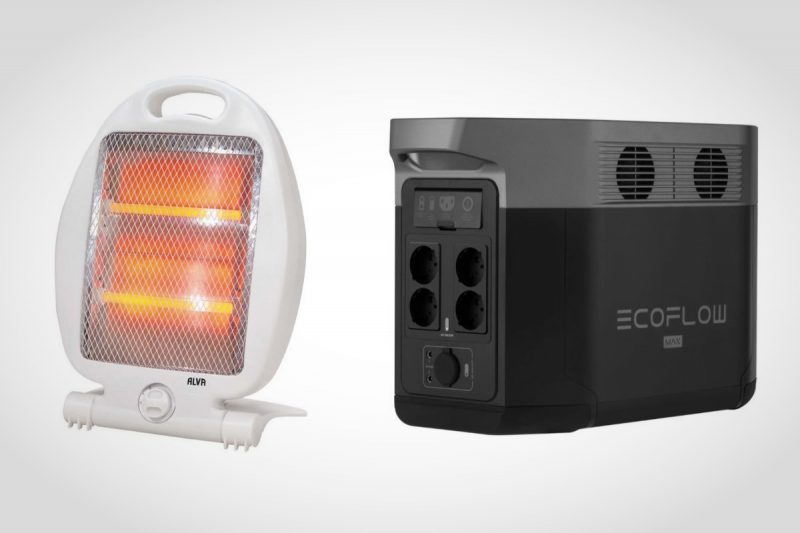Best heaters under R1,000 for beating load-shedding this winter

There are five main types of heaters available in South Africa that can run off relatively small backup power systems or no electricity — ideal for keeping warm during winter load-shedding.
Appliances with heating elements consume a lot of electricity, historically making them inappropriate for use with affordable, lower-end backup power systems.
However, South African consumers will find many portable power stations with peak output capacities over one kilowatt (1kW) and storage capacities of one kWh for under R10,000 in May 2025.
For less than R15,000, there are also many with more than 2kW output and 2kWh storage on the market.
These power stations may be viable for running several types of electrical heaters through a typical two-hour load-shedding slot.
One of the oldest and most well-known home heaters is the oil-filled fin heater. These devices use an element to heat up oil inside cavities in metal columns or fins.
Oil has a high specific heat capacity and boiling point, allowing it to transfer thermal energy to the metal enclosure while remaining a liquid.
With no gas formation, there is no risk of pressure build-up and explosion.
Oil heaters are considered to be among the safest and most energy-efficient heaters for heating rooms over a longer period.
They can draw well over 2kW (2,000W) but typically only do so while getting up to temperature.
While the time it takes to reach the set temperature will vary based on the model and preference, it generally takes between 15 minutes and 30 minutes.
In 30 minutes, a 2,000W power draw will still have consumed 1,000Wh or 1kWh of energy, which is substantial.
Fortunately, the oil heater only sporadically draws energy to retain heat after its initial startup.
Therefore, if you let the oil heater get up to temperature before load-shedding began, it may very well be able to run on a modestly-sized power station or battery.
The tricky bit will be ensuring the power station can support the maximum power the heater will draw under your preferred setting.

Wall or panel heaters are more energy-efficient than oil heaters — especially over the short term.
They typically use aluminium or ceramic materials for their elements and housings, and heat rooms with convection — like oil heaters.
These heaters have a more consistent power output — typically under 500W.
Their biggest caveats are that they must be installed in a fixed location, are not effective at heating up larger rooms, and can take time to spread heat.
Fan heaters are much better suited to quickly heat up a room with similar power consumption as a wall heater.
These appliances blow hot air from a heated metallic coil to accelerate the spread of heat.
They tend to have at least two power settings allowing for varying lower or higher outputs and consumptions.
Energy draw typically varies from around 400W or 500W to 2,000W.
At the lowest setting, you will be able to run a fan heater for two hours of load-shedding on a 1,000Wh power station.
Fan heaters are not only one of the most effective energy-efficient options, they are also very affordable — with prices starting from roughly R250.

Bar or tube heaters are another affordable option which can be very energy efficient.
These heaters use exposed heating elements typically made from quartz or halogen to quickly increase the temperature in the surrounding air.
They are best suited for heating up small spaces or in scenarios where users will be close to them.
However, they can be dangerous as users who don’t pay careful attention may burn themselves on the hottest parts.
The final type of common heater to consider is a gas heater, which does not consume any electricity.
These heaters burn gas to heat up a metal heat exchanger which spreads heat through panels
Depending on the design and gas capacity, these can effectively warm large rooms within a few minutes.
However, they are generally more expensive than the other options — with prices starting at R1,000 with a gas bottle.
They can also consume lots of gas if not used sparingly.
For example, the single panel Alva GH301 consumes 165 grams of gas per hour to heat up 50m². That will cost roughly R6.73 per hour when drawn from a 9kg gas bottle from Star Gas.
That is around double the current cost of a kWh of electricity to run an electrical fan heater to heat up the same space over an hour.
In addition, gas can be a major fire hazard if not treated with care.
The table below provides a comparison of the different types of heaters for staying warm during load-shedding or other power outages this winter.
| Power draw | Consumption over an hour | Ideal application | Portable | Starting pricing | |
|---|---|---|---|---|---|
| Oil fin heater | Over 1,500W | 1,500Wh in first hour 500Wh thereafter | Small or medium rooms | Yes | R800-R900 |
| Wall/panel heater | Less than 500W | 500Wh | Small rooms | No | R600-R700 |
| Bar heater | 400W to 1,800W | 400Wh to 1,800Wh | Small or medium rooms | Yes | R200-R300 |
| Fan heater | 500W to 2,000W | 500W to 2,000W | Medium or large rooms | Yes | R250-R300 |
| Gas heater | Not applicable | None — 165g of gas per hour at maximum | Medium or large rooms | Yes | R1,000 |
































